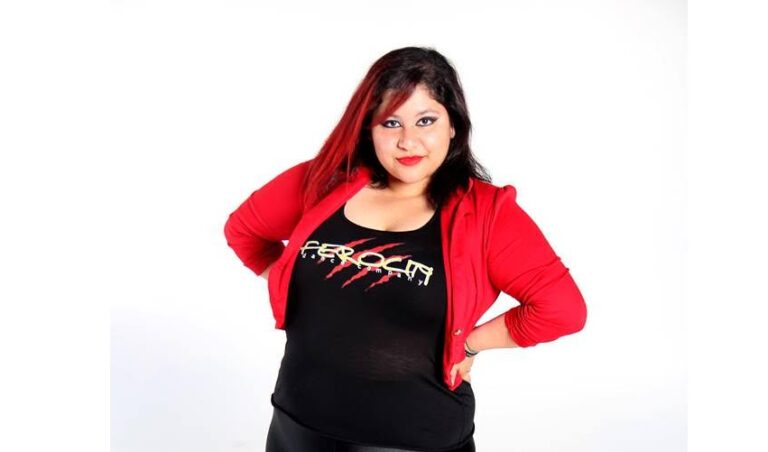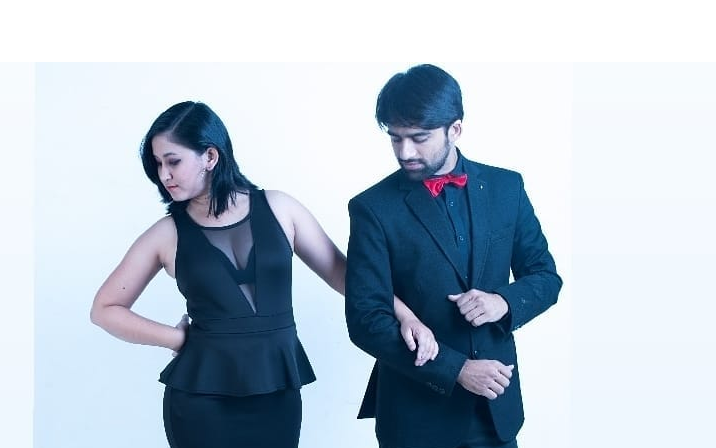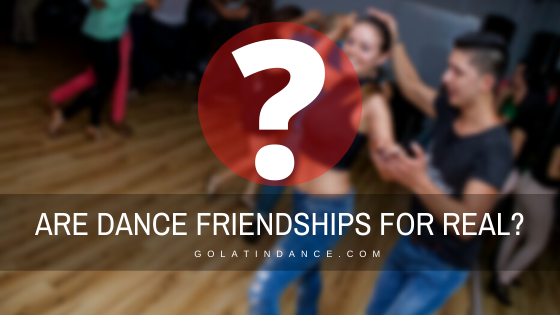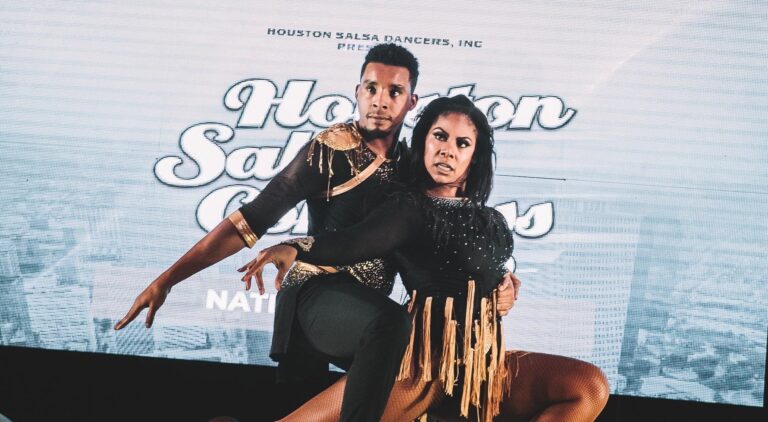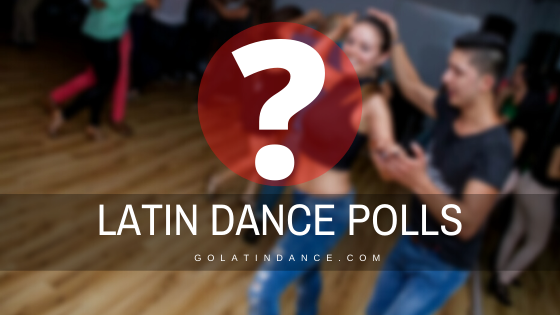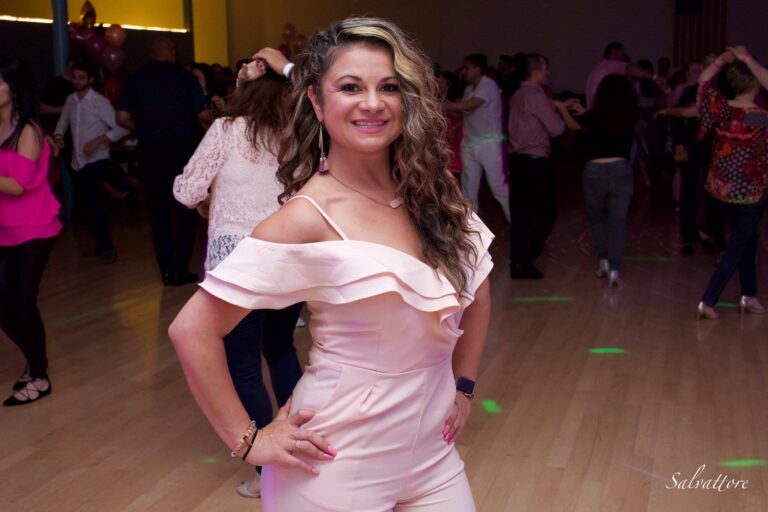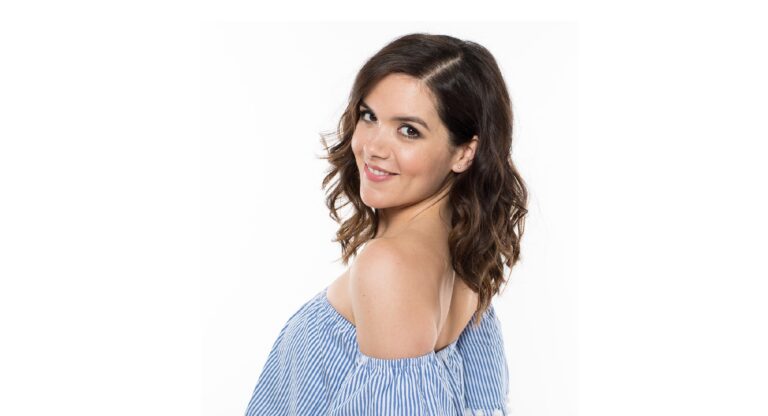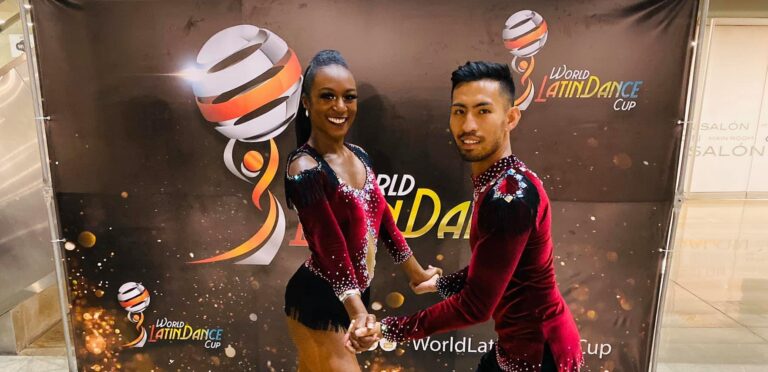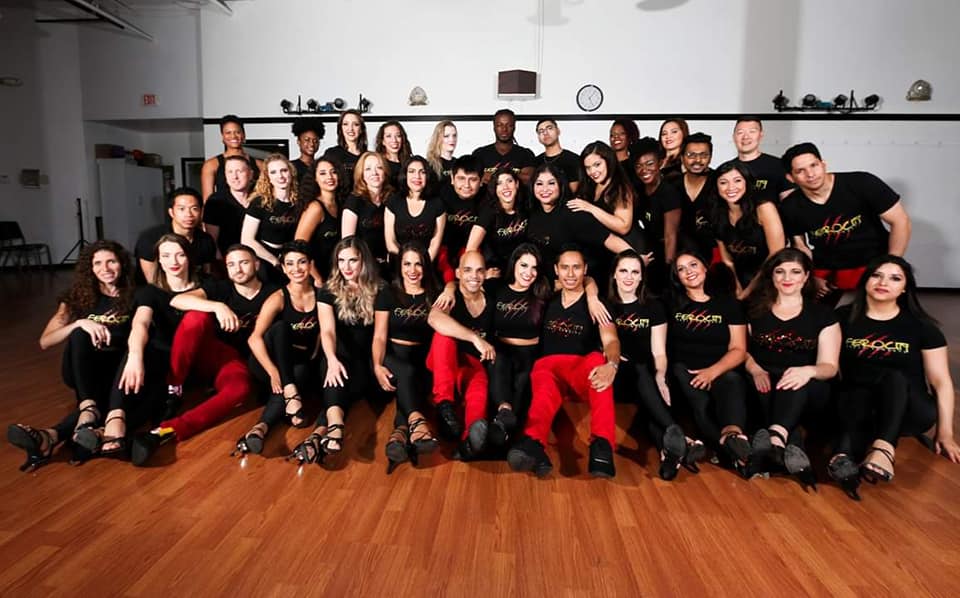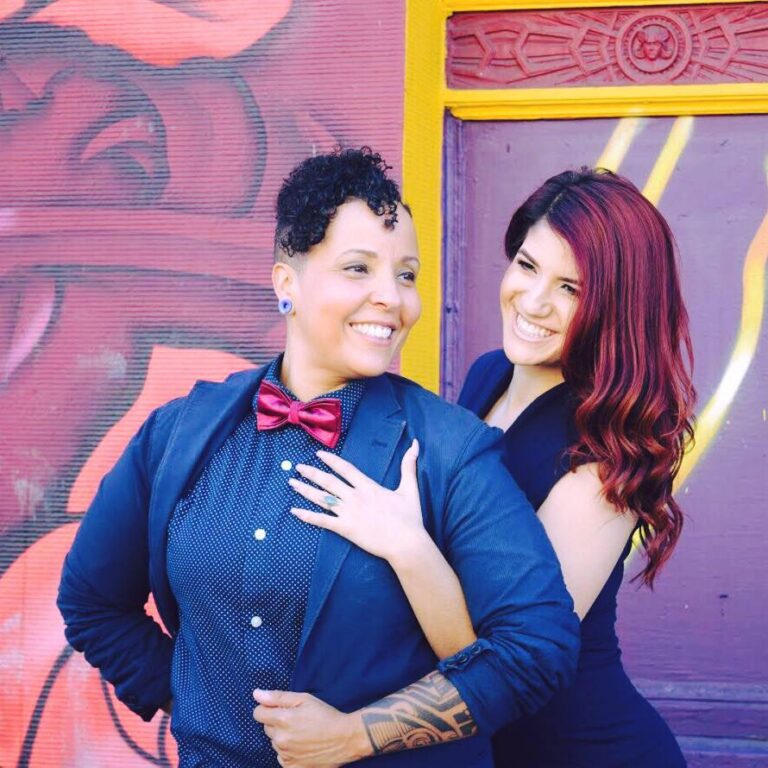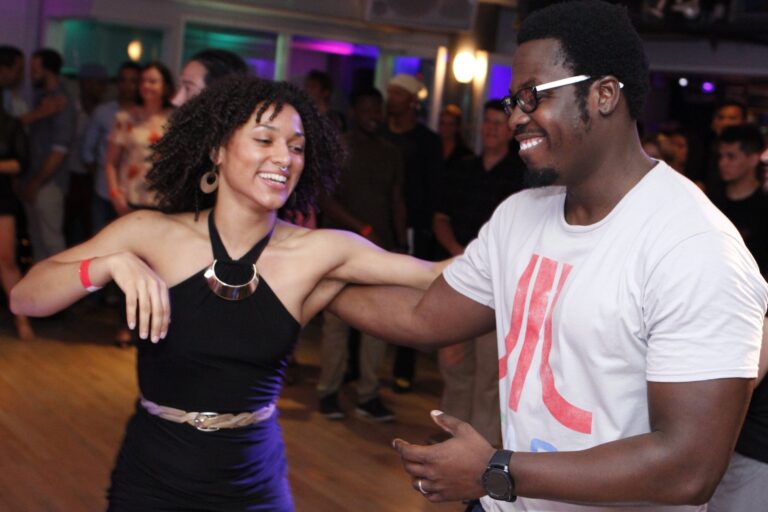Kat Arias is featured in this edition of Dance Spotlight! Kat lives in the DMV metro area and she is the owner and director of Ferocity Dance Company. She was nominated by Fata Karva.
Fata said, “There is truly no one that inspires me, challenges me to push myself as a dancer and in my personal life, and makes me laugh more than Kat. She sits in a unique place where she watches students grow while remaining the biggest constant and emotional support for all of us, all while being the lifeblood for the DC scene. Her fire, energy, and vibrance are so infectious and she always puts everyone first.”
Check out some fun facts and information on Kat including one of her fondest dance memories and the most important lesson she’s learned through dance.
Want to nominate someone to be in the Dance Spotlight? Contact us!
Per your bio, you entered the Latin dance community at age 22. What (or who) originally inspired you to try Latin dancing?
I have wanted to dance my entire life, but I never had any formal dance instruction until I was fourteen years old and taking dance lessons for my Quinceñera. That instructor pulled my mom aside one day and told her that I needed to teach and that I could dance. Up until that moment, I never felt like I was taken seriously in my dance dreams.
When I was in college I found a part time job as a receptionist in a Ballroom dance studio and I fell in love. Ballroom dancing is my first love and even so it took me a year to muster up the courage to take a class – after that class, my life changed overnight and I dedicated all my free time to dancing. From there I was reintroduced to Bachata and Salsa through one of the instructors that worked at the studio and the rest is history.
The mission statement of Ferocity Dance Company is ‘Fierce is For Everyone.’ You’ve also said, ‘Whomever wants to be family, can be.’ Can you expand on why you chose that mission statement and what those statements mean to you as the owner of Ferocity?
Our statement is “Fierce is for Everyone.” Inclusivity has been the most important thing that I have aimed for in having a dance company. I personally never felt like I could dance or audition for teams when I started because of my weight. But I know others feel this way because of different factors – be it race, disabilities, weight, age, money, sexual preference, or any of a million different reasons that people can feel excluded. I want my place to be different: I want people to know and feel when they meet me or when they walk through our doors, that they can be whomever they are and be accepted as long as they too are accepting of others. Whomever you are, you are free to be who you are and as Fierce as you want to be – in your own way, in our own place without fear of being judged. That is what Ferocity is to me.
“Whomever wants to be family, can be,” is something I’ve said ever since I started Ferocity. For me, Ferocity isn’t just a place that one goes or that one belongs to – Ferocity is an experience. It is the family I’ve always wanted, and all you need to be there is that desire to create a community of people from all different backgrounds and a home to share your story in. We go through all sorts of different things together as a family – just one that uses dance as therapy for all the good and bad in our lives. Both of these statements together are incredibly important to me, and I learn ways that I can do and be better at this inclusion every day.
Describe a dance moment in your career that made you feel proud?
The very first World Latin Dance Cup (WLDC) that we attended was in 2015, and it was probably one of the hardest years of my life as my father had passed away from cancer in December of 2014 and I didn’t even know if I had it in me to dance anymore. He had always been my cheerleader and taking on this new challenge of competing in a world competition without him was something that left me feeling very vulnerable and unsure of myself. The team and I went through a lot that year just trying to emotionally execute the routine with the vision that I had while growing closer as we learned of each other’s insecurities.
While at the WLDC I became very sick and my students wanted to go out to dinner and I told them that it was fine and I could stay in the room so they could enjoy. A few minutes after they left, one of them came back in with tears in his eyes. They had seen the semifinal results on their way out of the hotel, and he wanted to run back up and tell me. We had placed first with both categories that we competed in (Amateur team and Amateur couple.) He left the room, and I called my mom, and as I told her the news I just started crying, and she was so proud of me and told me that I should be proud too and for that one second, it felt like her and my dad were both with me. About a minute after I hung up the phone, my entire team ran into the room and we all cried together and took one of my all time favorite pictures.
We went into the WLDC unsure of ourselves but dedicated to being who we are, and in this one moment, all the tears and sacrifices were so worth it, and the cathartic energy was something I’ll never forget.
Do you have a favorite moment from your competitions? If so, what was the moment and why is it memorable?
My favorite moment was when I won third place for Professional Soloist at the 2018 WLDC. I had a horrible semifinal run with a wardrobe malfunction that left me feeling so low, I almost didn’t compete. I cried all night and I didn’t even know I had qualified for finals until I showed up to check in for a different division. At the last moment I decided to compete and just do the best that I could with a piece I loved dearly, not just for me but for my students that saw me and saw everything happen. When I placed third, I couldn’t do anything other than smile and I couldn’t believe that I had pushed through my own pile of insecurities to make that happen.
Dance Pet Peeve(s): (Hygiene, No connection, People who teach while dancing, etc)
I do find it frustrating when people ask me to dance and then stand there and say “Teach me something.” When I social dance, it’s for fun, not only is that not a request, but a command, but it also isn’t the right place for it. Social dancing is for fun, and the classroom is for teaching and learning.
I also am not a fan of lifts during social dancing and I was hit in the head by a follow’s heel once as she was being lifted and I was being dipped at the same time.
And I would also have to say, people that don’t listen to requests. I asked a lead to please not dip me in our dance, and he proceeded to force lead me into a back bend that I came up from crying, the pain was so excruciating and lasted for days. There can be a million reasons someone doesn’t want to do something, if they communicate it to you with their frame, or with their words, you should listen.
What is the most important lesson you’ve learned through your career as a dancer?
Dance is a never ending process, you will never know everything there is to know and things change all the time. You must always remain a student, take classes, keep your coaches, keep learning, and find mentors to guide you on your journey. Also, stay humble – dance is a way to communicate love, not ego.
What are your current favorite songs to dance to? Top two or three…
My top three songs right now are:
